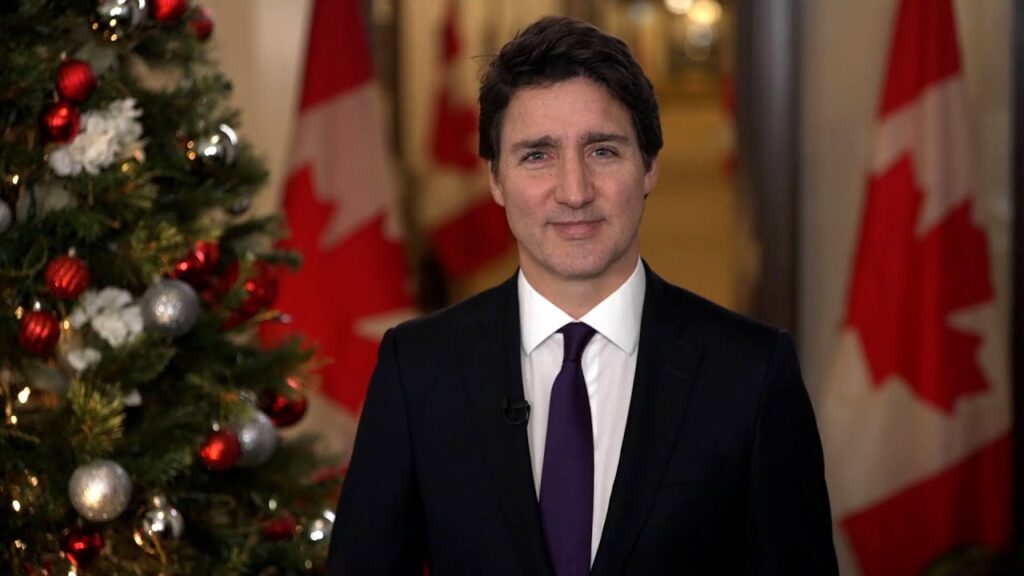A global public works program to rewire the planet would create millions of jobs, especially in developing countries. It would turn impoverished and dependent countries into trading partners. It would raise living standards abroad without compromising ours. It would undermine the economic desperation that gives rise to so much anti-US sentiment. And in a very short time, it would jump the renewable energy industry into a central, driving engine of growth of the global economy.
Unintentionally, we have set in motion massive systems of the planet with huge amounts of inertia that have kept it relatively hospitable to civilization for the last 10,000 years. We have reversed the carbon cycle by more than 400,000 years. We have heated the deep oceans. We have loosed a wave of violent and chaotic weather. We have altered the timing of the seasons. We are living on a very precarious margin of stability. Against that background, we are offering this set of strategies. We believe these strategies present a model of the scope and scale of action that is appropriate to the magnitude of the climate crisis.
To date, we have not seen other policy recommendations that adequately address either the scope or urgency of the problem. Largely because of inaction by the world’s governments, it seems that the Kyoto goals (but not the Kyoto process) are fast becoming obsolete – and that it is soon time to go straight for the goal of 70 percent reductions globally.
Our hope is to get ideas of this scope into the conversation to help move it to an appropriate level.
The Plan involves three interacting strategies which include:
- In industrial countries, the withdrawal of subsidies from fossil fuels and the establishment of equivalent subsidies for clean energy sources;
- The creation of a large fund – perhaps through a small tax on global commerce – to transfer clean energy technologies to developing countries; and,
- The incorporation within the Kyoto framework of a progressively more stringent Fossil Fuel Efficiency Standard that rises by 5 percent per year.
Subsidy switch:
The United States currently spends more than $20 billion a year to subsidize fossil fuels. (In 2007, that figure topped $37 billion). In the industrial countries overall, those subsidies have been estimated at $200 billion a year. We are proposing that, in the industrial countries, those subsidies be withdrawn from fossil fuels and equivalent subsidies be established to promote the development of clean energy sources. (Clearly a small portion of the U.S. subsidies must be used to retrain or buyout the nation’s 50,000 or so coal miners.) But the lions’ share of the subsidies would still be available for use by the major oil companies to retrain their workers and re-tool to become aggressive developers of fuel cells, wind farms, and solar systems.
At the same time, I believe, you would see the emergence of an army of energy engineers and entrepreneurs – with successively more efficient generations of solar film, turbines and tidal devices – in a burst of creativity that would rival the dot.com explosion of the 1990s. But even if the countries of the North were dramatically to reduce emissions, those cuts would be overwhelmed by the coming pulse of carbon from India, China, Mexico and Nigeria. Therefore the second element of the plan involves the creation of a fund of about $300 billion a year for several years to jumpstart renewable energy infrastructures in developing countries. Virtually all poor countries would love to go solar; virtually none can afford it. The most air-polluted cities in the world today are in China, Mexico, Thailand, Chile and other developing and transitional countries.
Energy Modernization Fund:
The size of the fund was calculated by energy policy specialists at the Tellus Institute. It could be financed by any number of mechanisms – a carbon tax in industrial countries or a tax on international air travel, to name two. One source we like is a tax on international currency transactions, named after its developer, the late Nobel prize-winning economist Dr. James Tobin. While Tobin conceived his tax as a way of damping the volatility in capital markets, it would also generate enormous revenues. Today the commerce in currency swaps amounts to $1.5 trillion per day.
A tax of a quarter-penny on a dollar would net out to about $300 billion a year for wind farms in India, fuel-cell factories in South Africa, solar assemblies in El Salvador, and vast, solar-powered hydrogen farms in the Middle East. Since currency transactions are electronically tracked by the private banking system, the need for a large, new bureaucracy could be avoided by paying the banks a fee to administer the fund. That fee could, to a large extent, offset their loss of income from the contraction in currency trading that would result from the tax. And the involvement of the banks in administering the fund would go a long way to minimizing corruption and ensuring that the money went directly to clean energy projects. The only new bureaucracy we envision would be an international auditing agency to ensure equal access for all energy vendors and to minimize corruption in recipient countries. (Several developing country commentators have suggested that corruption could be further curtailed by requiring recipient governments to include representatives of indigenous minorities, universities, NGOs and labor unions in their decisions about procuring new energy resources.)
If a currency transaction tax proves unacceptable, a carbon tax in industrial countries or a tax on international airline travel could fill the same function. Economists estimate that if carbon emissions were taxed at the rate of $50 a ton, the revenue would approximate the $300 billion from a tax on currency transactions.(Parenthetically, at this point, we have not calculated what would happen to transitional prices of carbon fuels if subsidies were removed and a carbon tax imposed at the same time. That may, or may not, be a viable combination.) Regardless of its revenue source, the fund – on the ground – would be allocated according to a United Nations formula to determine what percentage of each year’s fund would go to each developing country.
If India, for instance, were to receive $5 billion in the first year, it would then decide what mix of wind farms, village solar installations, fuel cell generators and biogas facilities it wanted. The Indian government (in this hypothetical example) would then entertain bids for these facilities. As contractors reached specified benchmarks, they would then be paid directly by the banks.
As self-replicating renewable infrastructures took root in developing countries, the fund could simply be phased out. Alternatively, progressively larger amounts of the fund could be diverted to other global environment and development needs.
Progressive Fossil Fuel Efficiency Standard:
The third – and unifying – strategy of the plan – which makes it all work – calls on the parties to Kyoto to subordinate the uneven and inequitable system of international emissions trading to a simple and equitable progressively more stringent Fossil Fuel Efficiency Standard which goes up by about five percent per year. This mechanism, if incorporated into the Kyoto Protocol, would harmonize and guide the global energy transition in a way that emissions trading can not. Even if all the shortcomings involving monitoring, enforcement and equity could be resolved, international carbon trading would most appropriately be used as a fine-tuning instrument – to help countries attain the final 10 to 15 percent of their obligations.
It is not the workhorse vehicle required to propel a worldwide energy transition. We simply can’t finesse nature with accounting tricks.
Instead, we are proposing that the parties to the Kyoto talks adopt a progressively more stringent Fossil Fuel Efficiency Standard which we believe would be simple to negotiate, easy to monitor and ultimately fair. (National “cap-and-trade” regimes could be useful in helping countries meet the progressive standard.) Under this mechanism, every country would start at its current baseline to increase its Fossil Fuel energy efficiency by 5 percent every year until the global 70 percent reduction is attained. That means a country would produce the same amount of goods as the previous year with five percent less carbon fuel. Alternatively, it would produce five percent more goods with the same carbon fuel use as the previous year. Since no economy grows at five percent for long, emissions reductions would outpace long-term economic growth. For the first few years of the efficiency standard, most countries would likely meet their goals by implementing low-cost or even profitable efficiencies – the “low-hanging fruit” – in their current energy systems.
After a few years, however, as those efficiencies became more expensive to capture, countries would meet the progressively more stringent standard by drawing more and more energy from non-carbon sources – most of which are 100 percent efficient by a Fossil Fuel standard. That, in turn, would create the mass markets and economies of scale for renewables that would bring down their prices and make them competitive with coal and oil. This approach would be far simpler to negotiate than the current Protocol, with its morass of details involving emissions trading, reviews of the adequacy of commitments and differentiated targets. It would also be far easier to monitor. A nation’s compliance would be measured simply by calculating the annual change in the ratio of its carbon fuel use to its gross domestic product. That ratio would have to change by 5 percent a year. This approach has a precedent in the Montreal Protocol, under which companies phased out ozone-destroying chemicals. That protocol was successful because the same companies that made the destructive chemicals were able to produce their substitutes – with no loss of competitive standing within the industry. An energy transition must be regulated in the same way.
Several oil executives have said in private conversations that they can, in an orderly fashion, decarbonize their energy supplies. But they need the governments of the world to regulate the process so all companies can make the transition in lockstep without losing market share to competitors.
A progressive Fossil Fuel Efficiency Standard would, I think, provide that type of regulation. The plan, then, would be driven by three engines: the subsidy switch would propel the metamorphosis of oil companies into energy companies; the progressive fossil fuel efficiency standard would harmonize the transformation of national energy structures and create a level field of predictable regulation for the major energy corporations; and the competition for the new $300 billion a year market in clean energy would power the whole process.
A global public works program to rewire the planet would create millions of jobs, especially in developing countries. It would turn impoverished and dependent countries into trading partners. It would raise living standards abroad without compromising ours. It would undermine the economic desperation that gives rise to so much anti-US sentiment. And in a very short time, it would jump the renewable energy industry into a central, driving engine of growth of the global economy.
Finally, at the risk of being overly visionary, I do believe, because energy is so central to our existence, that a common global project to rewire the world with clean energy could be the first step on a path to peace – even in today’s profoundly fractured world: Peace among people and peace between people and nature. Stepping back for a moment to a wider-angle vantage point, this kind of initiative could also be the beginning of the end of an outdated and increasingly toxic nationalism which we have long ago outgrown.
The economy is becoming truly globalized. The globalization of communications now makes it possible for any person to communicate with anyone else around the world. And since it is no respecter of national boundaries, the global climate makes us one. We hear many complaints about the costliness of addressing the climate crisis. But the real economic issue in rewiring the world with clean energy is not cost. The real economic issue is whether the world has a large enough labor force to accomplish this task in time to meet nature’s deadline.
But therein lies the catch – nature’s deadline. A growing number of the world’s leading climate scientists agree that we are already too far along a catastrophic trajectory to avoid significant disruptions. So my enthusiasm for the healing potential – on many different levels – of something like these solutions is tempered by an increasingly loud and persisting question: how are people of good will and social conscience supposed to respond in the face of a coming age of collapse? There is no body of expertise – no authoritative answers – for this one.
We are crossing a threshold into uncharted territory. And since there is no precedent to guide us, we are left with only our own hearts to consult, the intellectual integrity to look reality in the eye, whatever courage we can muster and our uncompromising dedication to a human future that reflects the combined aspirations of every single reader of this essay.
– Ross Gelbspan
Subscribe to our newsletter
Stay up to date with DeSmog news and alerts







